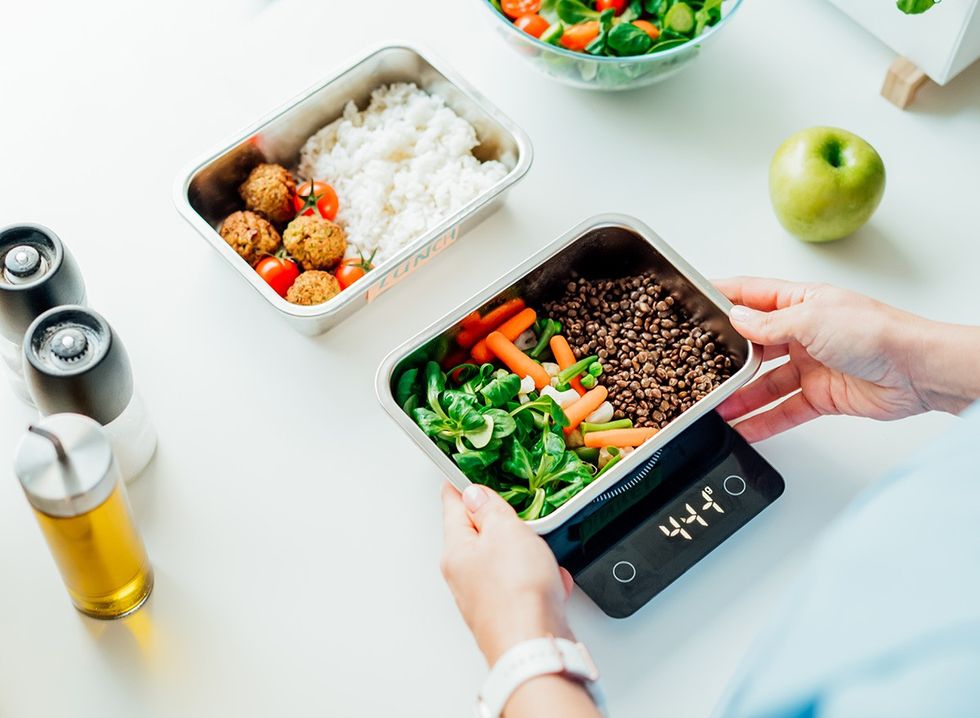Ever wondered why some people make rowing look effortless while others struggle? The secret lies in understanding the precise balance of muscle engagement - a technique that Sunny Fitness Trainer Dana Simonelli breaks down into a simple 60-20-20 ratio. In this 15-minute beginner workout, you'll learn how to master this technique while getting an effective full-body workout that engages 86% of your muscles.
The Science of the 60-20-20 Technique
Many beginners approach rowing as an upper body exercise, but Dana reveals the crucial insight that transforms rowing efficiency: "It's 60% legs, 20% core, and 20% upper body," she says in the video. This distribution explains why proper form is essential for maximizing your workout. When you understand this ratio, you'll immediately notice the difference in your rowing performance.
Full-Body Activation Benefits

Research shows that rowing engages approximately 86% of your body's muscles in each stroke. This comprehensive activation includes your legs, core, back, and arms, making it one of the most efficient full-body workouts available. The key is maintaining proper form throughout each movement to ensure all muscle groups are engaged effectively.
Mastering the Basic Movement Pattern

"When you bring the handle back, it's going to come right underneath your chest," Dana explains, highlighting the proper positioning. She emphasizes following the correct sequence: legs, core, upper body on the pull, then upper body, core, legs on the return. This pattern ensures you're maintaining the 60-20-20 ratio throughout each stroke.
RELATED: Top Fitness Coach Shares How She Lost 15 Pounds in 90 Days
Starting with the Right Resistance

For beginners, Dana recommends starting with a lower resistance setting. "Even when it's lower, you're still going to have tension pulling back," she notes. This approach allows you to focus on mastering the 60-20-20 technique while still getting an effective workout without overwhelming your muscles.
Interval Training for Beginners

The workout uses 30-second intervals to build endurance while maintaining proper form. "We're going to do 30-second intervals," Dana explains, emphasizing controlled movement over maximum effort. These short bursts followed by active recovery help you maintain the correct muscle engagement ratios throughout your session.
Advanced Grip Variations

Once you've mastered the basic form, Dana introduces grip variations to target different muscle groups. "Switch your grip so palms are up," she instructs, demonstrating how this engages the biceps while maintaining the core 60-20-20 principle. These variations add diversity to your workout while reinforcing proper technique.
Core Engagement Enhancement

To maximize the 20% core component, Dana introduces a side-to-side variation: "We're going to take it side to side," she demonstrates. This modification engages the obliques while maintaining the fundamental rowing motion, adding an extra dimension to your core workout.
RELATED: “Crush” Your Fat Loss in 10 Days with These 5 Fitness-Instructor Endorsed Tips
Progressive Resistance Application

As you become comfortable with the 60-20-20 technique, Dana guides you through gradual resistance increases. "You're going to add a little bit more resistance," she advises, while emphasizing the importance of maintaining proper form. This progression helps build strength while ensuring the correct muscle engagement ratio.
Maintaining Proper Stroke Rate

"Your stroke rate shouldn't be super crazy high," Dana cautions, explaining how a controlled pace helps maintain the 60-20-20 ratio. This focus on quality over quantity ensures you're getting the maximum benefit from each stroke while preventing form breakdown.
Recovery and Breathing Techniques

Proper recovery between intervals is crucial for maintaining form. "I want that heart rate to get down," Dana emphasizes during rest periods. This attention to recovery helps maintain energy levels and proper form throughout the workout, ensuring you can consistently apply the 60-20-20 technique.
RELATED: Fitness Instructor Lost 10 Pounds After Correcting 3 Habits
Mental Health and Stress Benefits

Beyond physical benefits, proper rowing technique offers significant mental health advantages. The rhythmic, repetitive nature of maintaining the 60-20-20 ratio creates a meditative effect similar to yoga, contributing to stress reduction and improved mental well-being.
Completing Your Workout

The session concludes with a final 15-second push followed by a proper cool-down. "Amazing job. You absolutely killed it," Dana encourages, reminding participants that mastering the 60-20-20 technique comes from consistent practice and attention to form. This structured conclusion helps ensure a safe and effective end to your workout session. And if you enjoyed this article, don't miss these 3 Simple Stretches Made This Coach More Flexible in 2 Weeks.














 justtcocoo/Instagram
justtcocoo/Instagram Shutterstock
Shutterstock justtcocoo/Instagram
justtcocoo/Instagram Shutterstock
Shutterstock Shutterstock
Shutterstock
 Copyright Kollins Ezekh
Copyright Kollins Ezekh plantbasedboxer/Instagram
plantbasedboxer/Instagram Shutterstock
Shutterstock Copyright Kollins Ezekh
Copyright Kollins Ezekh Copyright Kollins Ezekh
Copyright Kollins Ezekh Copyright Kollins Ezekh
Copyright Kollins Ezekh Copyright Kollins Ezekh
Copyright Kollins Ezekh plantbasedboxer/Instagram
plantbasedboxer/Instagram Copyright Kollins Ezekh
Copyright Kollins Ezekh Copyright Kollins Ezekh
Copyright Kollins Ezekh
 Jeff Nippard/YouTube
Jeff Nippard/YouTube Jeff Nippard/YouTube
Jeff Nippard/YouTube Jeff Nippard/YouTube
Jeff Nippard/YouTube Jeff Nippard/YouTube
Jeff Nippard/YouTube Jeff Nippard/YouTube
Jeff Nippard/YouTube


 I'm a Nutritionist and These 9 High-Protein Snacks Keep My Clients Full While Losing 50 Pounds
I'm a Nutritionist and These 9 High-Protein Snacks Keep My Clients Full While Losing 50 Pounds
 Shutterstock
Shutterstock 2. Processed FoodsShutterstock
2. Processed FoodsShutterstock Shutterstock
Shutterstock Shutterstock/Prostock-studio
Shutterstock/Prostock-studio Shutterstock
Shutterstock Pro TipsShutterstock
Pro TipsShutterstock Shutterstock
Shutterstock Shutterstock
Shutterstock Shutterstock
Shutterstock Shutterstock
Shutterstock Don’t Drink as Much AlcoholShutterstock
Don’t Drink as Much AlcoholShutterstock Most Women on GLP-1s Are Making a Few Common MistakesShutterstock
Most Women on GLP-1s Are Making a Few Common MistakesShutterstock Soda and Sugary DrinksShutterstock
Soda and Sugary DrinksShutterstock Shutterstock
Shutterstock Eat BreakfastShutterstock
Eat BreakfastShutterstock And Improve Insulin SensitivityShutterstock
And Improve Insulin SensitivityShutterstock Belly Flab Strip Tip: Sugar and Fat Calories Leave Its Mark on Your BodyShutterstock
Belly Flab Strip Tip: Sugar and Fat Calories Leave Its Mark on Your BodyShutterstock Shutterstock
Shutterstock The Drugs Mimic the GLP-1 Hormone Naturally Produced by the BodyShutterstock
The Drugs Mimic the GLP-1 Hormone Naturally Produced by the BodyShutterstock 3. Deep-Fried ItemsShutterstock
3. Deep-Fried ItemsShutterstock